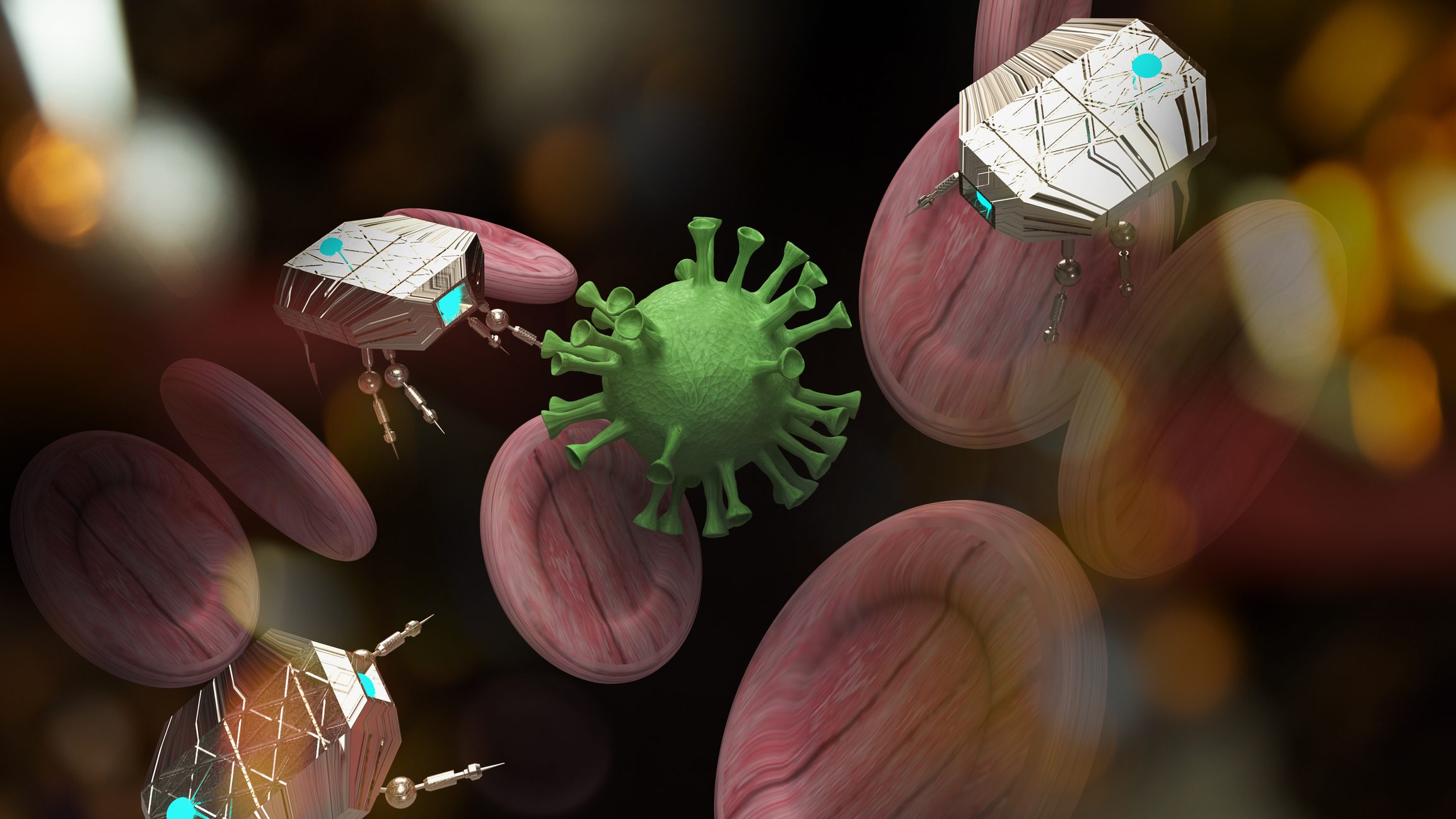
Size matters, especially when it comes to performing delicate tasks. A heart surgeon couldn’t work effectively with a pair of garden shears; no matter how well made, the tool simply isn’t scaled appropriately to the job.
The example might seem frivolous, but in many branches of medicine, such as cancer treatment, researchers and front-line physicians alike have been in the position of a surgeon equipped only with garden shears and carpenter’s saws.
This is why medical researchers have become interested in nanomaterials, and particularly in nanoparticles, objects that approach the atomic scale of size. Because key biochemical interactions operate on much the same scale, nanomedicine has emerged as a critical field of research.
What Are Nanoparticles?
So, what are nanoparticles? The prefix “nano” means one billionth and in the context of size means a billionth of a meter. As a reference point, according to CUNY, the typical size of a single atom is about 10-10 meters, more conveniently expressed as a 10th of a nanometer.
The Conversation reports that nanomedicine concerns itself most broadly with objects and structures less than 1000 nanometers in their crucial dimensions — thus, about 10,000 atoms across. Often nanomedicine is interpreted more strictly as concerned with objects smaller than 200 nanometers across, the maximum safe size for injection into the bloodstream.
Nanomaterials, as the International Journal of Nanomedicine notes, can be one-dimensional, such as nanowires and nanotubes, or even two-dimensional, such as exceedingly thin sheets of material. Nanoparticles are classed as “zero-dimensional” nanomaterials because they’re nano-scaled along all dimensions.
Nanoparticles in Medicine
As The Conversation notes, one particular class of nanoparticle has become very well known indeed: so-called mRNA vaccines, such as the Moderna and Pfizer COVID-19 vaccines. These are built around nanoparticles formed of lipids and fatty acids.
This technology, unknown until a few years ago, has already had a transformative impact on global public health. In essence, these vaccines package a payload of mRNA into nanoparticle “target drones,” comparable in size and configuration to the coronavirus. These are then injected into the bloodstream, where they train the immune system to recognize and attack the coronavirus on sight.
Other current nanoparticle applications include rapid COVID-19 and pregnancy tests. These work on quite a different principle. The nanoparticle in these applications is made of gold (!), and its nano-scale size allows it to be injected into the bloodstream. It also responds to quantum forces that operate only on very small scales, producing visible responses — colored bands — that larger particles couldn’t produce because of the fundamental physics involved.
While the development of mRNA vaccines has already more than repaid our research effort in the nanoparticle domain, the Holy Grail of nanomedicine remains what has been dubbed precision or personalized medicine, and cancer treatment in particular.
But this effort has proven to be extraordinarily challenging — much tougher than researchers originally expected. Some of the difficulties are, not surprisingly, related to small size, which makes a nanoparticle less rugged than a larger structure would be. Nature reports that a nanoparticle, often abbreviated to NP, confronts “both physical and biological barriers — including shear forces, protein adsorption and rapid clearance — that limit the fraction of administered NPs that reach the target.”
In short, the human body is a demanding environment. But the even greater challenge is that living beings are extremely varied environments.
The Challenge of Heterogeneity
The challenge, in a nutshell, is heterogeneity — otherwise known as the enormous variety of nature, extending from the differences between research animals and human patients to the differences among individual patients. According to Nature, researchers have been confronted with “underexplored heterogeneity both in the biological underpinnings of diseases and amongst patients.”
On a practical level, the challenge isn’t unlike a burglar attempting to pick a lock. Many biochemical processes, good and bad, operate like a lock and key; the molecular key needs to fit the molecular lock to open it. The first requirement is for a key (or lockpick!) that fits the lock.
Nanotechnology has made it possible for us to produce nanoparticle keys that are the right size for the lock. But that brings us face to face with what has turned out to be the real challenge: producing the specific key that will fit a particular lock.
According to Medical Device Network, “In general, there is a lack of understanding about what makes patients different from each other in terms of why drugs lack ubiquitous efficacy.” This is an enormous challenge. And it explains why, in spite of the triumph of the mRNA COVID-19 vaccines, nanoparticle researchers sometimes express a note of frustration.
The good news is that making sense of complexity is, in a meaningful sense, what science as a way of thinking is all about. And a lot of science is waiting to be done to let us harness the full potential of nanomedicine.
Are you interested in science and innovation? We are, too. Check out Northrop Grumman career opportunities to see how you can participate in this fascinating time of discovery.


